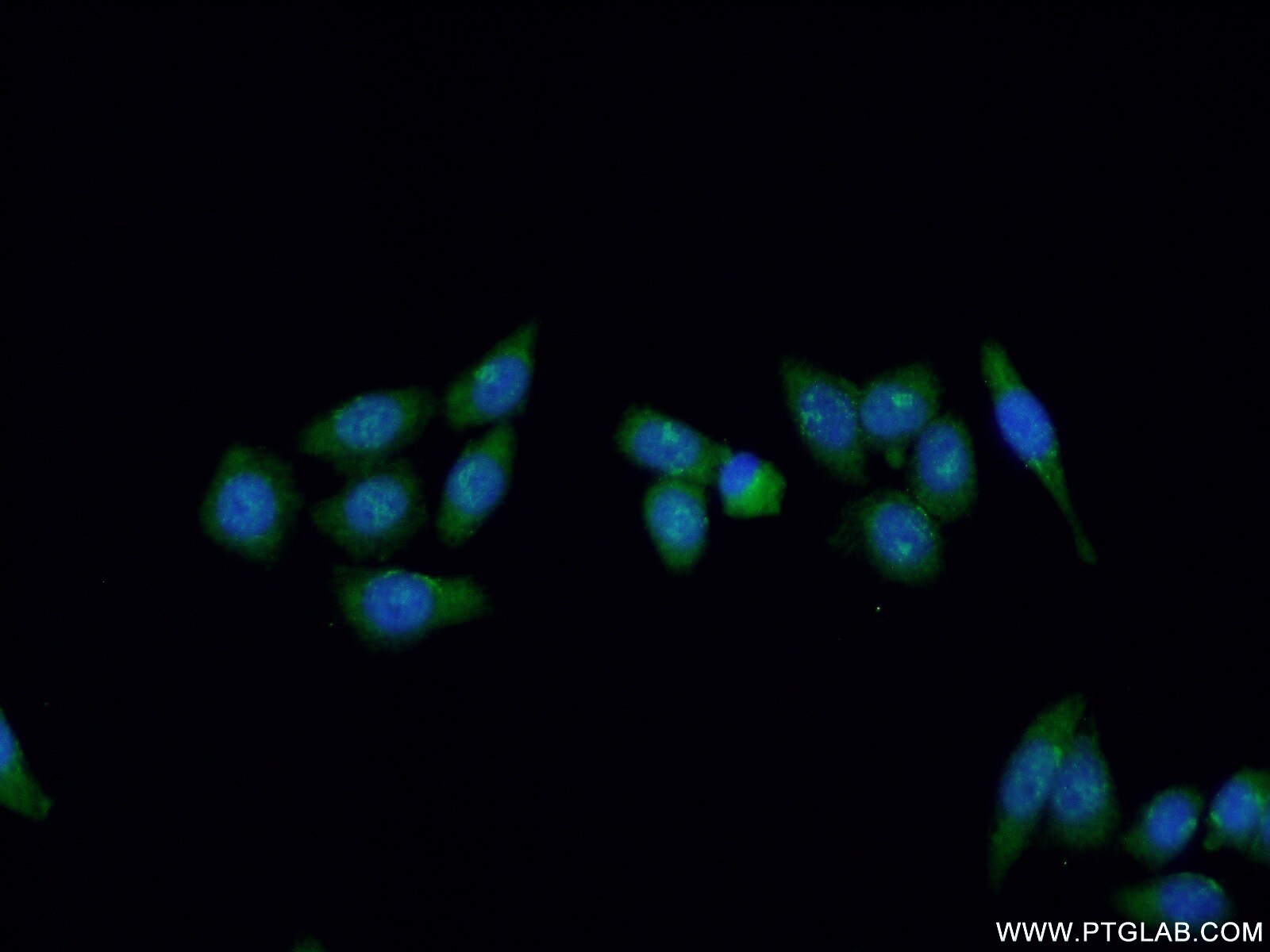- Featured Product
- KD/KO Validated
XPG Polyklonaler Antikörper
XPG Polyklonal Antikörper für WB, IF/ICC, IP, ELISA
Wirt / Isotyp
Kaninchen / IgG
Getestete Reaktivität
human und mehr (1)
Anwendung
WB, IF/ICC, IP, ELISA
Konjugation
Unkonjugiert
Kat-Nr. : 11331-1-AP
Synonyme
Galerie der Validierungsdaten
Geprüfte Anwendungen
| Erfolgreiche Detektion in WB | HeLa-Zellen, Daudi-Zellen, HepG2-Zellen |
| Erfolgreiche IP | HeLa-Zellen |
| Erfolgreiche Detektion in IF/ICC | HeLa-Zellen |
Empfohlene Verdünnung
| Anwendung | Verdünnung |
|---|---|
| Western Blot (WB) | WB : 1:500-1:3000 |
| Immunpräzipitation (IP) | IP : 0.5-4.0 ug for 1.0-3.0 mg of total protein lysate |
| Immunfluoreszenz (IF)/ICC | IF/ICC : 1:20-1:200 |
| It is recommended that this reagent should be titrated in each testing system to obtain optimal results. | |
| Sample-dependent, check data in validation data gallery | |
Veröffentlichte Anwendungen
| KD/KO | See 3 publications below |
| WB | See 9 publications below |
| IF | See 1 publications below |
Produktinformation
11331-1-AP bindet in WB, IF/ICC, IP, ELISA XPG und zeigt Reaktivität mit human
| Getestete Reaktivität | human |
| In Publikationen genannte Reaktivität | human, Maus |
| Wirt / Isotyp | Kaninchen / IgG |
| Klonalität | Polyklonal |
| Typ | Antikörper |
| Immunogen | XPG fusion protein Ag1874 |
| Vollständiger Name | excision repair cross-complementing rodent repair deficiency, complementation group 5 |
| Berechnetes Molekulargewicht | 1186 aa, 133 kDa |
| Beobachtetes Molekulargewicht | 200 kDa |
| GenBank-Zugangsnummer | BC031522 |
| Gene symbol | ERCC5 |
| Gene ID (NCBI) | 2073 |
| Konjugation | Unkonjugiert |
| Form | Liquid |
| Reinigungsmethode | Antigen-Affinitätsreinigung |
| Lagerungspuffer | PBS mit 0.02% Natriumazid und 50% Glycerin pH 7.3. |
| Lagerungsbedingungen | Bei -20°C lagern. Nach dem Versand ein Jahr lang stabil Aliquotieren ist bei -20oC Lagerung nicht notwendig. 20ul Größen enthalten 0,1% BSA. |
Hintergrundinformationen
The human genes correcting DNA repair defects are termed excision-repair cross-complementing or ERCC genes. The ERCC5 gene corrects the excision repair deficiency of Chinese hamster ovary cell line UV135 of complementation group 5. The human ERCC5 gene product is a structure-specific endonuclease required for making the 3-prime incision during DNA nucleotide excision-repair (NER). It also plays an important role in regulating DNA excision repair, removal of bulky lesions caused by environmental chemicals or UV light [PMID:22815677]. The calculated molecular weight of ERCC5 is 133 kDa, but the modified ERCC5 protein is about 200 kDa.
Protokolle
| Produktspezifische Protokolle | |
|---|---|
| WB protocol for XPG antibody 11331-1-AP | Protokoll herunterladen |
| IF protocol for XPG antibody 11331-1-AP | Protokoll herunterladen |
| IP protocol for XPG antibody 11331-1-AP | Protokoll herunterladen |
| Standard-Protokolle | |
|---|---|
| Klicken Sie hier, um unsere Standardprotokolle anzuzeigen |
Publikationen
| Species | Application | Title |
|---|---|---|
Cell Human Rad52 Promotes XPG-Mediated R-loop Processing to Initiate Transcription-Associated Homologous Recombination Repair.
| ||
Mol Carcinog Associations between Expression Levels of Nucleotide Excision Repair Proteins in Lymphoblastoid Cells and Risk of Squamous Cell Carcinoma of the Head and Neck. | ||
Oncol Rep Characterization of the nucleotide excision repair pathway and evaluation of compounds for overcoming the cisplatin resistance of non‑small cell lung cancer cell lines.
| ||
Biochim Biophys Acta Stimulation of ribosomal RNA gene promoter by transcription factor Sp1 involves active DNA demethylation by Gadd45-NER pathway. |




